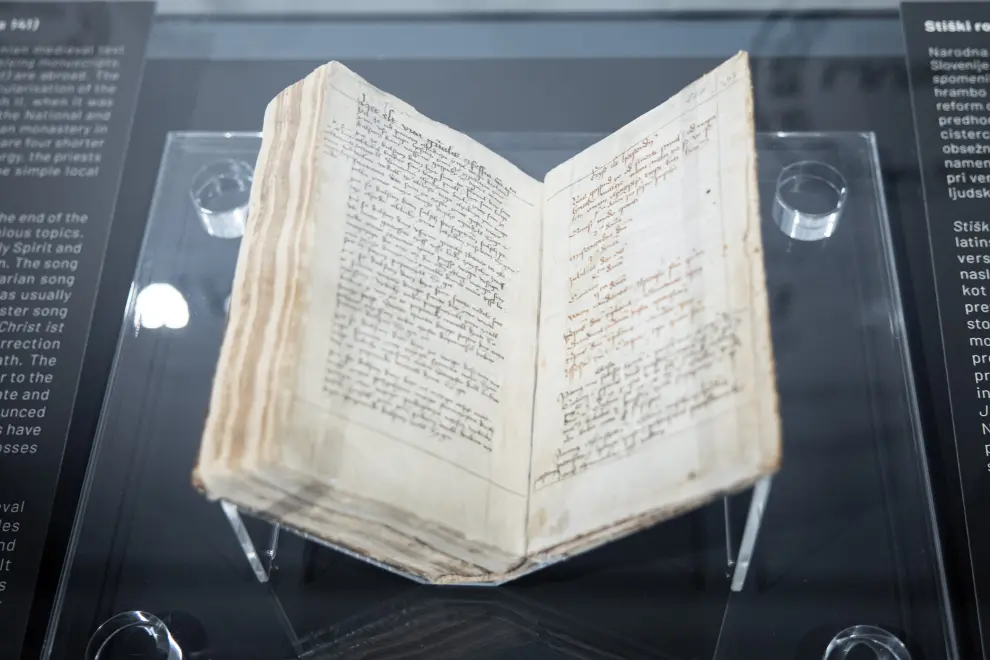National library celebrates 250th anniversary
The National and University Library (NUK) is celebrating the 250th anniversary since its inception. Its present home one of the most impressive buildings in Ljubljana, it is Slovenia's largest and most important library.
The library developed from the Ljubljana Lyceum Library, started in 1774 when 637 books rescued from a fire at what by then was a dissolved Jesuit monastery were made available to the public under a decree issued by Habsburg Empress Maria Theresa.
The Lyceum Library received books from many more monastery libraries, as monastic orders had been dissolved. By 1791, the collection comprised 20,000 books and three years later it became a public library.
In the early 19th century is was afforded the right to get every copy issued in what was then Carinthia, only growing from there.
NUK moved to the current premises just as the Second World War broke out. The building was designed by the acclaimed architect Jože Plečnik (1872-1957) in the 1930s, and has been on the UNESCO list of world heritage since 2021.
The library changed its name several times, settling for the National and University Library in Ljubljana in 1945, and then assumed new responsibilities when Slovenia gained independence in 1991.
Sadly, the library is still waiting to get a new wing to accommodate its expanding collection. After decades of planning, the construction of NUK II was set to begin in 2023, but it is now unlikely to start before 2025 as archaeological excavations on the site are yet to begin due to delays involving the call to select the contractor.
Library honoured for its invaluable role
Marking the anniversary of what is the oldest continuously operating institution in Slovenia, President Nataša Pirc Musar honoured the library with the Order of Merit for Distinguished Service at a ceremony on 28 May.
The decoration recognises the library's invaluable role in building and preserving Slovenian national identity and cultural heritage, and in developing the librarian's profession and university librarianship.
"The building, which is considered by many to be the most beautiful in Ljubljana, is itself a cultural monument of global importance. Its task is akin to that of an ornate jewel box: to hold an even greater treasure in its preciousness," the president said.
The library's quarter of a century "reminds us that the history of Slovenianhood did not start in 1991, 1945 or 1918, but much earlier", she added, mentioning Barbara of Celje (Barbara of Cilli, 1392-1451), the only empress of Slovenian descent and the only Slovenian mentioned in the Nuremberg Chronicle, which is kept at NUK.
In his acceptance speech NUK director Viljem Leban, said that some of the things have not changed over the past 250 years: "We still speak Slovenian in the dual form, and we Slovenians still tend to quarrel over trivial matters".
But at the same time the nation is united by the desire to preserve its cultural heritage and to pass it on to future generations. And it is precisely this task of collecting and preserving material, especially in Slovenian and about Slovenians, that NUK performs, he added.
Original treasures on display
NUK is marking the anniversary with an exhibition titled Preserving Thoughts - for 250 Years, a mosaic of documents that spotlight the many roles that the library has played and continues to play while turning to the future.
The exhibition is divided into two parts. The exhibits on display until September tell about how the library first opened and how it collects its books. The second part will showcase the diversity of its collection, how it is organised and preserved.
The library will also display "original treasures", documents of exceptional importance, not only for the library but for the cultural and scientific development of the nation.
Some of the most priceless ones will be on display in a glass showcase of the month. The first on show is the Stična Manuscript, the most important Slovenian medieval manuscript, written in the 15th century.

The 15th century Stična Manuscript displayed at an exhibition marking the 250th anniversary of the National and University Library. Photo: Katja Kodba/STA
In early June it will be replaced by a 1515 leaflet featuring a German military poem which was printed following the defeat of the biggest peasants' revolt in Slovenian lands. The poem also contains the rebel's motto in Slovenian in what are the first known printed Slovenian words.
More will follow until the end of the year, including the 1689 Glory of the Duchy of Carniola by polymath Janez Vajkard Valvasor, the first Slovenian translation of the Bible, as well as the manuscript of A Toast, a poem by France Prešeren (1800-1849), the 7th stanza of which is now used as the lyrics of the Slovenian national anthem.


